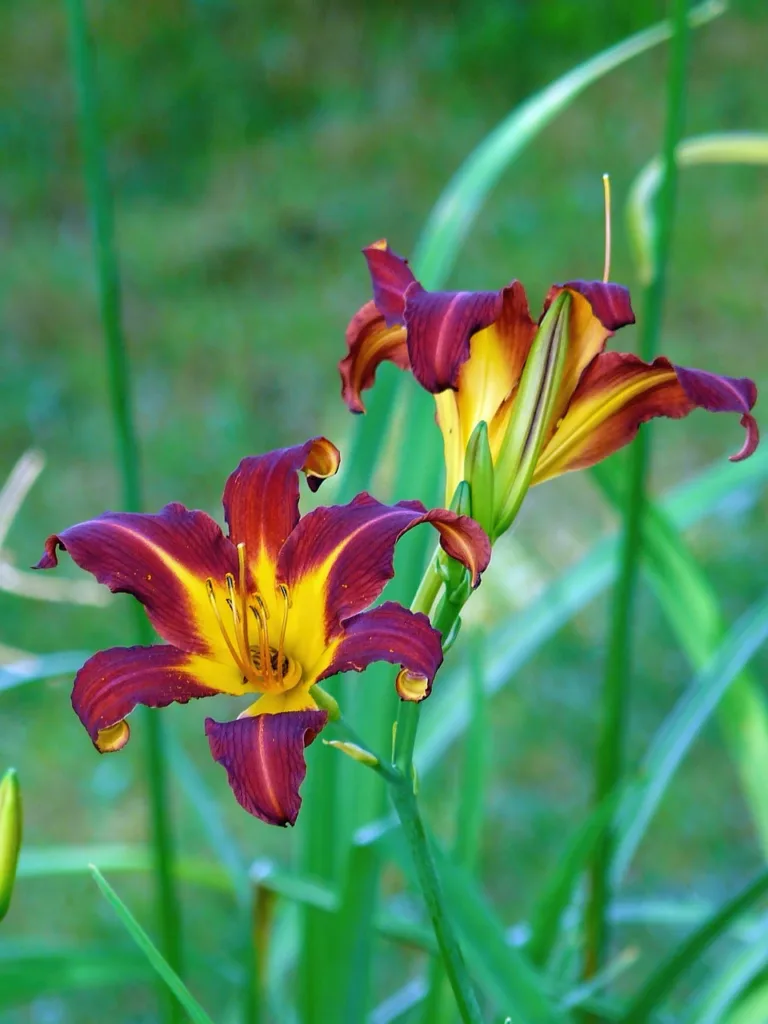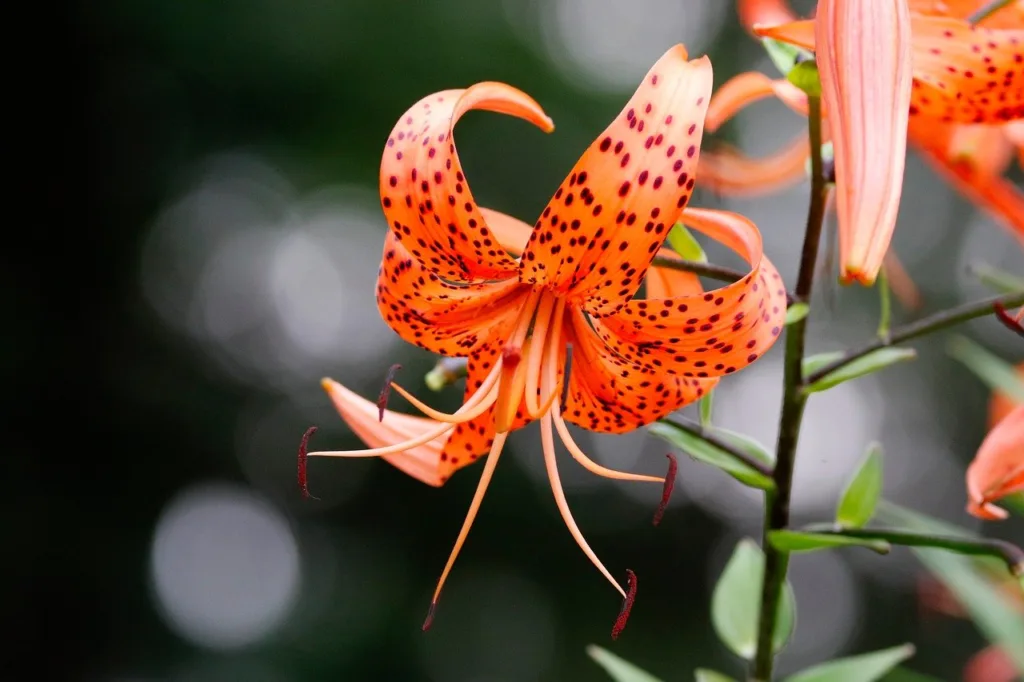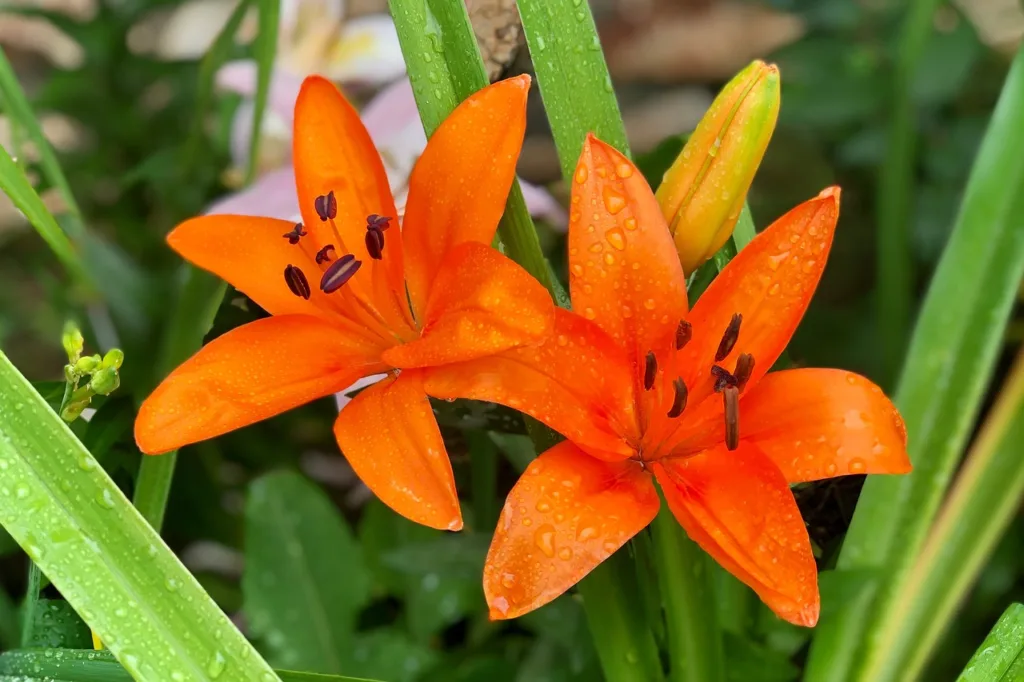Welcome to our comprehensive guide on how to grow and care for tiger flowers! Whether you are a seasoned gardener or just starting out.
This blog post will provide you with all the information you need to successfully grow and maintain these stunning flowers. From planting to maintenance tips, we’ve got you covered. So, let’s get started!
What is Tiger Flower
Tiger flower, scientific name Tigridia pavonia, is a lively and exotic flower species native to Central America.
Also known as the Mexican shell flower or peacock flower, the tiger flower is known for its attractive colors and unique patterns. The petals of this flower resemble the fur of a tiger, hence its name.
These flowers bloom during the summer months and add color to gardens and landscapes.
Tiger flowers come in a variety of colors including yellow, orange, red, and white, making them a popular choice among gardeners looking for an attractive display.
| Aspect | Details |
|---|---|
| Common Name | Tiger Flower, Mexican Tiger Flower |
| Scientific Name | Tigridia pavonia |
| Family | Iridaceae |
| Native Habitat | Mexico, Guatemala, and Honduras |
| Blooming Season | Late spring to early summer |
| Bloom Colors | Varied, includes red, yellow, white, pink, and orange hues |
| Special Features | Striking tiger-like spots or patterns on the flower petals |
| Soil Requirements | Well-draining soil, preferably loamy |
| Sunlight Preferences | Full to partial sun exposure |
| Watering Needs | Moderate water needs, avoid overwatering |
Types of Tiger Flower
Tigridia pavonia, commonly known as the Tiger Flower, presents different varieties with various colors and subtle differences. Some types or varieties of Tigridia pavonia include:
- Tigridia pavonia var. catesbyana: This variety often exhibits striking red, yellow, or white flowers with a unique blend of colors and patterns.
- Tigridia pavonia ‘Alba’: Known for its white blooms, often pure white or with a hint of yellow at the base.
- Tigridia pavonia ‘Aurea’: This variety usually displays golden or yellow hues in the flower.

Care and Planting Tiger Flower Bulbs
When it comes to planting tiger flower bulbs, timing is of the essence. These bulbs should be planted in the spring after the last frost, to ensure they have enough time to establish their roots before the hot summer months.
To get started, choose a sunny spot in your garden that receives at least six hours of direct sunlight each day.
Tiger flowers thrive in soil with good drainage, so it’s a good idea to prepare the soil before planting. You can amend the soil with organic materials such as compost to improve its texture and fertility.
Dig holes about 2-3 inches deep and place the tiger flower bulbs in them with the point upward. Space the bulbs about 6-8 inches apart to give them enough space to grow.
Once planted, cover the bulbs with soil and pat them down gently to make sure they are secure in the ground.
Watering and Maintenance
Keeping your tiger flowers well-watered is essential for their growth and overall health. These tiger flowers prefer a moderate amount of water, so water them once or twice a week, depending on the weather conditions. Avoid overwatering, as it can lead to root rot and other issues.
Mulching around tiger flower plants can help conserve soil moisture and prevent weed growth. Add a layer of organic mulch, such as wood chips or straw, around the base of the plants, taking care not to cover the bulbs.
This will also help regulate the temperature of the soil, keeping the roots cool during hot summer days.
Check regularly for signs of pests or diseases and take appropriate measures to control them. Common pests that can impact tiger flowers include aphids, snails, and slugs.
If you see any signs of infestation, use organic pest control methods or consult a horticulture professional for advice.
Fertilizing Tiger Flowers
To promote healthy growth and plentiful blooms, it is recommended to fertilize tiger flowers regularly. Use a balanced, all-purpose fertilizer that’s specially formulated for flowering plants.
Follow the directions on the fertilizer package to determine the appropriate amount and frequency of application.
It is best to fertilize tiger flowers in early spring, just as new growth begins to emerge. This will provide them with the nutrients they need to promote their growth throughout the season.
Avoid fertilizing during the flowering period, as it may hinder flower development.
Deadheading and Dividing
Deadheading is an important practice to extend the bloom period of tiger flowers. As each flower fades and fades, simply cut it off at the base to stop seed production.
This will redirect the plant’s energy towards producing new flowers, resulting in a longer and more vibrant display.
Over time, tiger flower bulbs may become overcrowded and need to be divided. Dividing bulbs not only helps revive plants but also allows you to plant new plants in different areas of your garden.
Wait until the leaves dry out in late summer before dividing the Tiger Flower bulbs.
To divide tiger flower bulbs, dig them up carefully and separate the smaller bulbs or offsets from the main bulb.
Make sure each division has at least one healthy growth point. Replant the divisions in prepared soil, following the planting instructions described previously.
Protection from Extreme Weather
While tiger flowers are generally hardy plants, they can be susceptible to damage from extreme weather conditions.
If you live in an area with harsh winters, it’s advisable to lift the bulbs and store them indoors during the dormant season.
To lift tiger flower bulbs, carefully dig them up after the foliage has died back in late summer. Dust off any excess soil and store the bulbs in a cool, dry place, such as a cardboard box or mesh bag.
Ensure proper air circulation to prevent rotting, and periodically check for signs of mold or decay.
Before the next growing season, inspect the bulbs for any signs of damage or disease. Discard any bulbs that appear rotten or shriveled, as they are unlikely to produce new growth.
Healthy bulbs can be replanted in the spring, following the planting instructions we discussed earlier.

Dealing with Pests and Diseases Tiger Flower
Pest Management: Common pests that affect tiger flowers can include aphids and spider mites. Inspect plants regularly for pests and consider using horticultural oil or insecticidal soap to control infestations.
Disease Prevention: These flowers are generally resistant to most diseases. However, they can sometimes suffer from fungal problems, especially if soil drainage is poor. Providing adequate soil drainage and air circulation around plants can prevent fungal diseases.
Regular maintenance: Maintain good cultural practices, such as watering at the base of plants to avoid getting the foliage wet, which can reduce the chance of diseases. Additionally, remove any diseased or dead parts promptly to prevent problems from spreading.
Organic solutions: Consider using organic solutions for pest and disease management. For example, neem oil, which has insecticidal and fungicidal properties, can be an eco-friendly way to control pests and some diseases.
Consult garden centers: If the problem persists or you are unsure of the cause or treatment, consult local garden centers or experts for advice on specific pests or diseases that may affect tiger flowers in your area. Are.
Conclusion
Growing and caring for tiger flowers can be a rewarding experience for gardeners of all skill levels. With their vibrant colors and unique patterns, these flowers are sure to captivate anyone who sees them.
By following our planting and maintenance tips, you can ensure that your tiger flowers thrive and bring beauty to your garden or landscape.
Remember to choose a sunny spot, prepare the soil, and plant the bulbs in the appropriate season. Water and fertilize your tiger flowers regularly and be on the lookout for pests or diseases.
Deadhead spent flowers and divided overcrowded bulbs to prolong their blooming period.
By providing the right care and attention, your tiger flowers will reward you with a stunning display of exotic beauty year after year.
So, why not give them a try and add a touch of the wild to your garden? Happy gardening!
People Also ask
What is the flower of the tiger?
Flower of the Tiger: While not a direct representation of a tiger, the term is linked to Tigridia pavonia due to its spotted, vividly colored petals that somewhat resemble a tiger’s pattern.
Is there a flower called a tiger?
Existence of Tiger Flower: Yes, Tigridia pavonia is commonly known as the Tiger Flower.
Are tiger flowers annual or perennial?
Annual or Perennial: The Tiger Flower is a perennial plant, yet it’s often grown as an annual in regions affected by frost, blooming in the summer.
What are some interesting facts about tiger flowers?
Interesting Facts: These flowers are named after the Greek word “tigris,” meaning tiger, because their petals bear a resemblance to the tiger’s fur patterns. Each bloom typically lasts only a single day, but the plant produces more blossoms, allowing a prolonged blooming period.
How long do tiger flowers last?
Longevity: Individual blossoms of the Tiger Flower last only one day, but the plant produces new flowers, ensuring continuous blooms throughout its flowering season.

